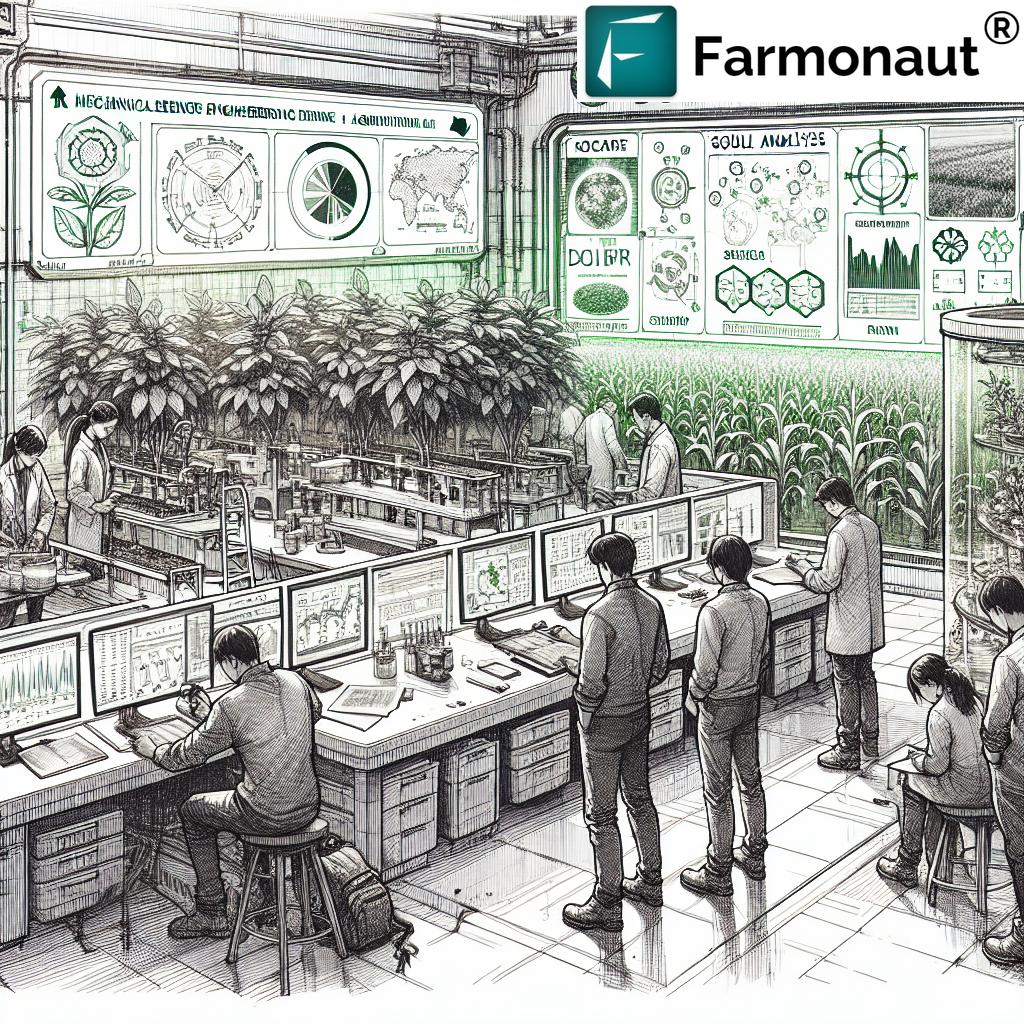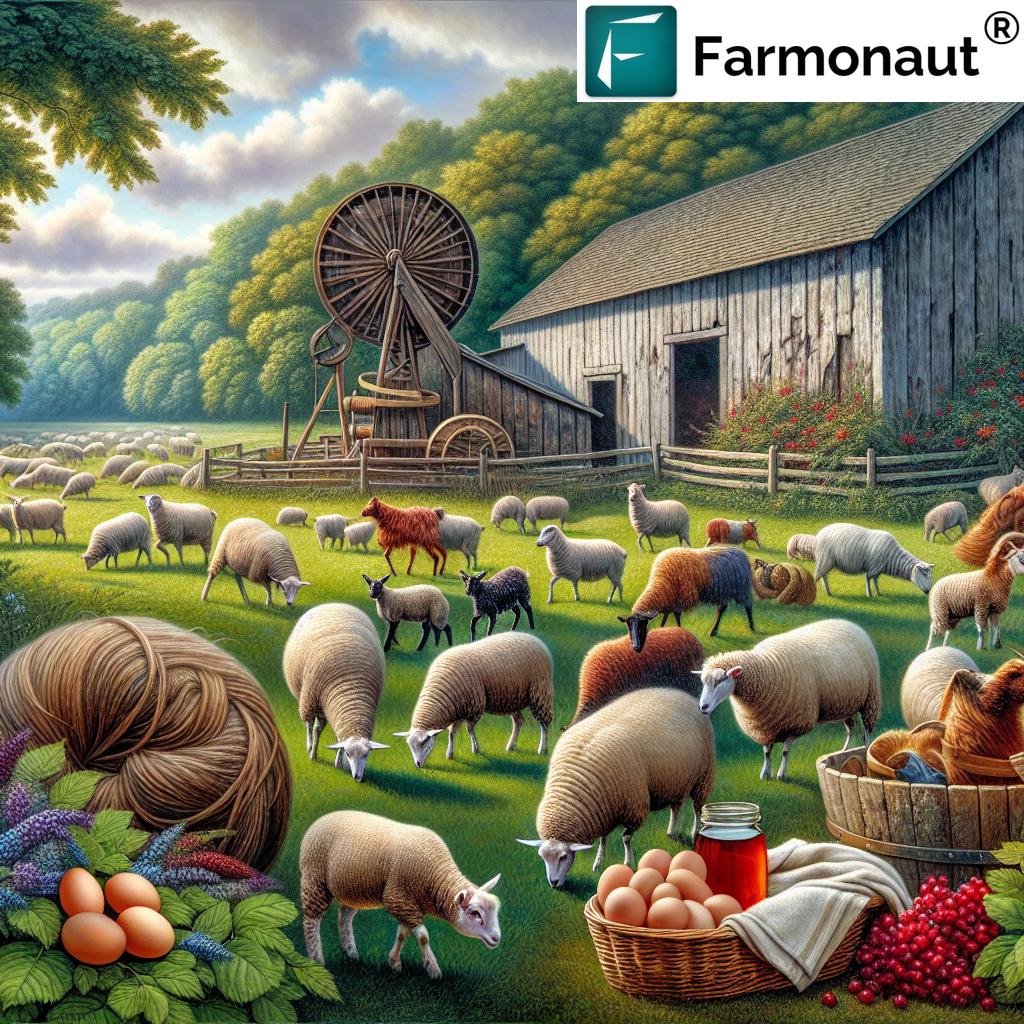Beef Bulls & Beefmaster Bulls for Sale: Top 7 Traits for Sustainable Farming in 2025
“Over 85% of Beefmaster bulls are selected for adaptability, enhancing sustainable beef production in diverse climates.”
Introduction: The Critical Role of Beef Bulls in 2025 and Beyond
In 2025 and extending well into 2026, the beef industry remains a global cornerstone of agriculture, with beef bulls playing an essential role in driving productive, resilient, and sustainable livestock farming systems. As the demand for premium quality beef continues to rise among health-conscious and environmentally aware consumers, farmers, ranchers, and producers are increasingly focused on selecting bulls with superior traits—especially those linked to adaptability, robust genetic profiles, herd efficiency, and overall sustainable performance and profitability.
Two outstanding types of bulls that have garnered significant attention are Beefmaster and Hereford bulls. Known respectively for their versatile, adaptive genetics and traditional excellence in meat quality, understanding what makes these breeds optimal, and how to leverage them for herd improvement, is critical for farmers aiming to optimize productivity, sustainability, and profitability in the next agricultural era.
What Makes Beef Bulls Vital for Global Agriculture?
Beef bulls—as opposed to their dairy counterparts—are male cattle specifically bred to sire calves destined for beef production. Their influence on a herd extends far beyond genetics; selecting the right bull can shape the quality, growth, feed efficiency, carcass yield, and disease resilience of future generations.
- Genetic contribution: One bull can sire dozens to even hundreds of calves, making his genetic traits the backbone of the herd’s future.
- Profitability: Whether a commercial operation or seedstock breeding, bulls directly impact weight gain rates, meat marbling, calving ease, and overall animal survival—key drivers for maximizing returns.
- Environmental sustainability: Bulls bred for resilience, disease resistance, and efficient feed conversion allow farmers to produce more beef with lower environmental impact, essential in modern sustainable agriculture.
- Adaptability to local conditions: As climate change accelerates, bulls that thrive in arid, humid, or variable environments ensure herd performance and health.
This contextualizes why making the right bull selection—from beefmaster bulls for sale to hereford bulls and other popular breeds—remains essential for today’s and tomorrow’s ranchers, producers, and sustainable farming enthusiasts.
Beefmaster Bulls—Modern Marvels of Cattle Production
Beefmaster bulls encapsulate the ideal of the versatile, high-performance beef cow sire, uniquely equipped for commercial operations playing a vital role in both global agriculture and environmentally responsible farming systems.
History & Development of Beefmaster Bulls
The Beefmaster breed originated in the United States during the 1930s. The goal was to create a composite breed by blending Brahman, Hereford, and Shorthorn genetics—using a strategic mixture allowing bulls to thrive in climates as diverse as the Texas heat and the humidity of the Deep South.
- Brahman: Heat tolerance, disease resistance, and longevity.
- Hereford: Calm temperament, efficient feed conversion, and reproductive success.
- Shorthorn: Meat quality, maternal strength, and productive capacity.
The resulting Beefmaster bull is both hardy and productive—well-positioned for sustainable beef production in 2025 and beyond.
Why Choose Beefmaster Bulls in 2025?
Beefmaster bulls for sale remain exceptionally popular for modern farmers and ranchers for several reasons:
- Adaptability: They excel in diverse climates (arid, humid, or fluctuating), making them the ideal choice for farming under climate stress or changing rainfall patterns.
- Disease resistance: The Brahman heritage gives natural resilience to parasites and local diseases, reducing reliance on antibiotics and medication.
- Efficient feed conversion: Beefmasters are renowned for growing rapidly on natural pastures, enhancing feed efficiency and lowering costs for producers.
- Maternal capabilities: Sires deliver excellent, productive replacement heifers that add value to the entire operation.
- Longevity: Bulls and cows are long-lived, maximizing genetic returns and reducing replacement frequency—which minimizes environmental and financial waste.
- Proven crossbreeding value: Their genetics maximize herd vigor and enhance carcass quality when combined with other breeds.
If you are aiming to optimize herd productivity, sustainability, and quality, investing in beefmaster bulls for sale is a proven strategy for remaining competitive and resilient against industry challenges.
“Genetics from Hereford bulls can improve herd productivity by up to 20% in eco-friendly beef farming systems.”
Hereford Bulls—Traditional Excellence in Modern Operations
Among the most recognized breeds worldwide, the Hereford bull is famed for its distinctive red body, white face, and enduring contribution to efficient, eco-friendly beef production.
- Docile temperament aids in handling, safety, and animal welfare.
- Hardiness and resilience suitable for both purebred herds and crossbreeding operations.
- Feed efficiency ensures lower input costs and consistent weight gain.
- Excellent meat quality—noted for uniform marbling, tenderness, and flavorful carcass.
- Calving ease and strong maternal instincts reduce labor needs while improving calf survivability.
Hereford bulls for sale especially shine for those seeking consistent performance and straightforward genetic improvement. With 25+ countries favoring Herefords for sustainable beef systems in 2025, this breed continues to be both a traditional and modern solution for cattle farmers.
Comparative Traits Table—Beefmaster, Hereford, and Other Top Beef Bulls
Choosing the right beef bull is a nuanced decision, further complicated by climate change, evolving farming systems, and environmental regulations. The following table compares Beefmaster, Hereford, and other prominent types of bulls using sustainable cattle farming criteria relevant for 2026 and beyond.
| Breed | Adaptability (1-5) |
Genetic Strength | Feed Efficiency (1-5) |
Temperament (1-5) |
Disease Resistance (1-5) |
Calving Ease (1-5) |
Environmental Impact (1-5) |
|---|---|---|---|---|---|---|---|
| Beefmaster | 5 | Composite – Brahman x Hereford x Shorthorn; high heterosis | 5 | 4 | 5 | 4 | 5 Low input, fits sustainable models |
| Hereford | 4 | Pure; high consistency, reliable crossbreeding | 4 | 5 | 4 | 5 | 4 Efficient, lower methane output |
| Angus | 3 | Pure; superior marbling, easy calving | 4 | 4 | 3 | 5 | 3 Common in feedlots |
| Charolais | 3 | Pure; growth & muscle gain | 3 | 3 | 3 | 3 | 3 Higher resource needs |
| Simmental | 3 | Pure/Composite; dual-purpose, robust calves | 3 | 3 | 3 | 4 | 3 Great for crossbreeding |
The Top 7 Bull Traits for Sustainable Beef Farming
With cattle farming at a crossroads of economic, environmental, and ethical considerations, selecting for the following beef bull traits is paramount in 2026’s sustainable systems.
1. Adaptability to Environmental Conditions
- Definition: A bull’s ability to thrive in diverse climates, from arid regions to humid pastures and under challenging climatic conditions.
- Beefmaster bulls particularly excel here, remaining productive even in harsh weather or limited resources.
2. Superior Genetics—Optimizing Herd Performance
- Impact: Superior genetics drive growth rate, feed conversion, disease resistance, and carcass quality through generations.
- Integrating genomic testing in bull selection—as widely available in modern breeding programs—ensures ongoing sustainability and productivity.
3. Feed Efficiency and Growth Performance
- Key to Sustainability: Efficiently converting natural feed into muscle minimizes resource use and costs.
- Beefmaster and Hereford bulls are both celebrated for superior feed efficiency—a major benefit in eco-focused operations.
4. Calving Ease—Reducing Labor and Risks
- Easy calving bulls reduce the risk of injury, labor intensity, and calf mortality—a significant economic and ethical advantage.
- Hereford bulls are globally acknowledged for predictable, smooth calving, making them perfect for herd improvement.
5. Disease Resistance and Longevity
- Bulls with natural disease resistance and long productive lives enable sustainable beef production with fewer veterinary inputs and renewed investments.
- The Brahman influence in Beefmaster bulls significantly enhances this trait.
6. Maternal and Reproductive Capabilities
- Selecting sires that produce capable, fertile replacement heifers ensures long-term productivity—critical for commercial farmers building self-sustaining herds.
- Beefmaster and select Hereford bulls are both prized for outstanding maternal and reproductive traits.
7. Environmental Impact & Eco-Friendly Contribution
- The new era of cattle farming demands bulls that can maximize output while minimizing environmental footprints.
- Bulls contributing to lower methane emissions, regenerative pasture use, and resource efficiency fuel sustainable agriculture and meet evolving market demands.
Buying Beefmaster and Hereford Bulls for Sale in 2025: What Farmers and Ranchers Need to Know
With increasing global demand for high-quality beef, there is a robust market for beefmaster bulls for sale, hereford bulls for sale, and other types of bulls. Modern buyers must make well-informed decisions for sustainable and profitable operations.
Checklist for Prospective Buyers
- Genetic lineage: Review the pedigree records to ensure superior traits for growth, resistance, and adaptability.
- Health status: Bulls for sale should have up-to-date health certificates and free from any transmissible disease risks.
- Performance records: Assess data on weight gain, feed conversion, calving ease scores, and maternal indices.
- Adaptability ratings: Bulls should fit the local climatic conditions—check their adaptability to rain, heat, or cold stress.
- Genomic testing: DNA insights are now widely available for farmers and buyers, enabling selection for disease resistance, growth rate, fertility, and other traits crucial for sustainable production.
Where to Find Bulls for Sale in 2025
Thanks to technology, a variety of options exist for ranchers seeking bulls:
- Online platforms: Access breeders’ catalogs, performance data, and even live video inspections.
- Regional livestock auctions: See a diverse selection and engage with other producers.
- Local breeders: Offer customized solutions and bulls acclimated to your farm’s unique conditions.
Always compare available animals using objective, sustainability-focused criteria; rely on reputation and independent verification to ensure quality.
Optimize your sustainable beef production with digital insights—explore the Farmonaut App for satellite-based monitoring of pasture health, carbon footprinting, and more.
Crossbreeding, Herd Improvement, and Eco-Sustainability
Forward-thinking farmers and ranchers recognize the importance of using diverse bull types to continually improve herd vigor, adaptability, and sustainability in complex, changing agricultural landscapes.
Benefits of Crossbreeding Programs
- Hybrid Vigour (Heterosis): Significantly enhances growth, carcass traits, disease resistance, and reproductive performance.
- Strategic Crosses: Examples include pairing Beefmaster bulls with local beef cows or combining Hereford bulls with exotic breeds for improved adaptation and meat quality.
- Sustainable herd dynamics: Crossbreeding helps maintain a genetically diverse, climate-resilient herd—critical for eco-sustainability.
Regenerative Grazing & Natural Pasture Management
Bulls that maximize feed efficiency and enable natural grazing allow for reduced input systems, improved soil health, and lower environmental impact. Selecting bulls for these traits supports regenerative agriculture—the new gold standard for sustainable beef farming.
Modern Digital Tools: Unlocking Insights with Farmonaut
As we advance toward 2026, the integration of advanced digital technology into cattle farming is paramount. At Farmonaut, we provide satellite-driven monitoring and AI-powered advisory systems for agricultural users worldwide—enabling data-based decisions that directly impact herd productivity, environmental impact, and profitability.
- Satellite Monitoring: We empower farmers to view their pastures, grazing intensity, and soil health in real time, ensuring cattle, bulls, and operations remain resilient regardless of climate shifts.
- AI-Based Advisory: Our Jeevn AI system supports precision grazing management, resource optimization, and hazard alerts to boost overall productivity and sustainability.
- Blockchain Traceability: Producers can verify the origin and sustainability of their animals, helping to build trust in the beef supply chain. Explore Farmonaut’s traceability solution for beef and livestock supply chains.
- Environmental Compliance: Carbon tracking, available through our platform, lets farmers measure and reduce their operation’s carbon footprint for greener, market-preferred beef. See Farmonaut’s specialized carbon footprinting tools for beef operations.
- Resource Management APIs: Innovators and large-scale operations can integrate Farmonaut’s API for customized monitoring and advisory. Learn more: Farmonaut Satellite API | API Developer Docs
- Financial Verification: Satellite proof for loans or insurance eligibility on farm and livestock investments—including bulls and herds. Explore our tools for crop loan and insurance verification.
Learn more about large scale farm management with Farmonaut—ideal for herds incorporating Beefmaster, Hereford, or other beef bulls.
Our aim is to democratize access to data-driven, environmentally responsible agriculture—equipping all beef producers for long-term success.
FAQs about Beef Bulls, Beefmaster, and Hereford Bulls for Sale
What are beef bulls and how do they differ from dairy bulls?
Beef bulls are male cattle bred to sire calves for the beef industry, possessing genetics tailored for enhanced meat quality, feed conversion, growth, and resilience. Dairy bulls specialize in traits supporting milk production.
Why are Beefmaster bulls popular in modern sustainable farming?
Beefmaster bulls offer exceptional adaptability, disease resistance, maternal capability, and efficient feed utilization. As climate patterns become less predictable, these composite bulls offer robust performance while lowering environmental footprints.
Are Hereford bulls suitable for crossbreeding?
Yes—Hereford bulls are one of the most recognized choices for crossbreeding due to their docility, calving ease, predictable meat quality, and hardiness. Crosses with other popular breeds strengthen overall herd performance.
How do I know which bull to buy for my operation’s needs?
Consider your local climate, pasture resources, production goals, disease challenges, and herd genetics. Evaluate bulls for adaptability, growth, feed performance, genomic profile, and health status. Consulting with breeders and using modern digital tools (like Farmonaut) enables informed choices.
What steps can I take to make my beef farming operation more sustainable?
Select bulls with proven eco-friendly traits, use crossbreeding, manage natural pastures for soil health, and employ satellite-based platforms (like carbon tracking from Farmonaut) to monitor your impact and optimize resource use.
Do bulls influence herd health and profitability in the long run?
Absolutely. Bulls set the genetic direction for health, growth, fertility, and sustainability. The right bull enhances long-term herd performance, animal welfare, and profitability.
Where can I learn more about blockchain-based traceability for beef production?
For blockchain-powered supply chain transparency, visit Farmonaut’s traceability solution for agriculture and livestock.
Conclusion—Optimizing Cattle Breeds for our Sustainable Future
The narrative of the cattle industry in 2025, 2026, and beyond is rapidly shifting to prioritize environmental responsibility, efficiency, and resilient meat production. Championing this transition are Beefmaster and Hereford bulls—each playing a vital role by contributing exceptional genetics, adaptability, and sustainable farming applications.
Recognizing the importance of these bull breeds, integrating modern digital solutions, and embracing environmentally conscious farming methods are the strategic choices that will—collectively—build a foundation for eco-friendly, profitable, and productive beef cattle operations on a global scale.
Staying informed and adaptable—with the help of technology like Farmonaut’s satellite-based agricultural tools—remains the best way forward for farmers, ranchers, and commercial beef producers hoping to thrive in the new era of livestock agriculture.
Ready to revolutionize your cattle operation? Experience smarter, sustainable farming with Farmonaut today.












